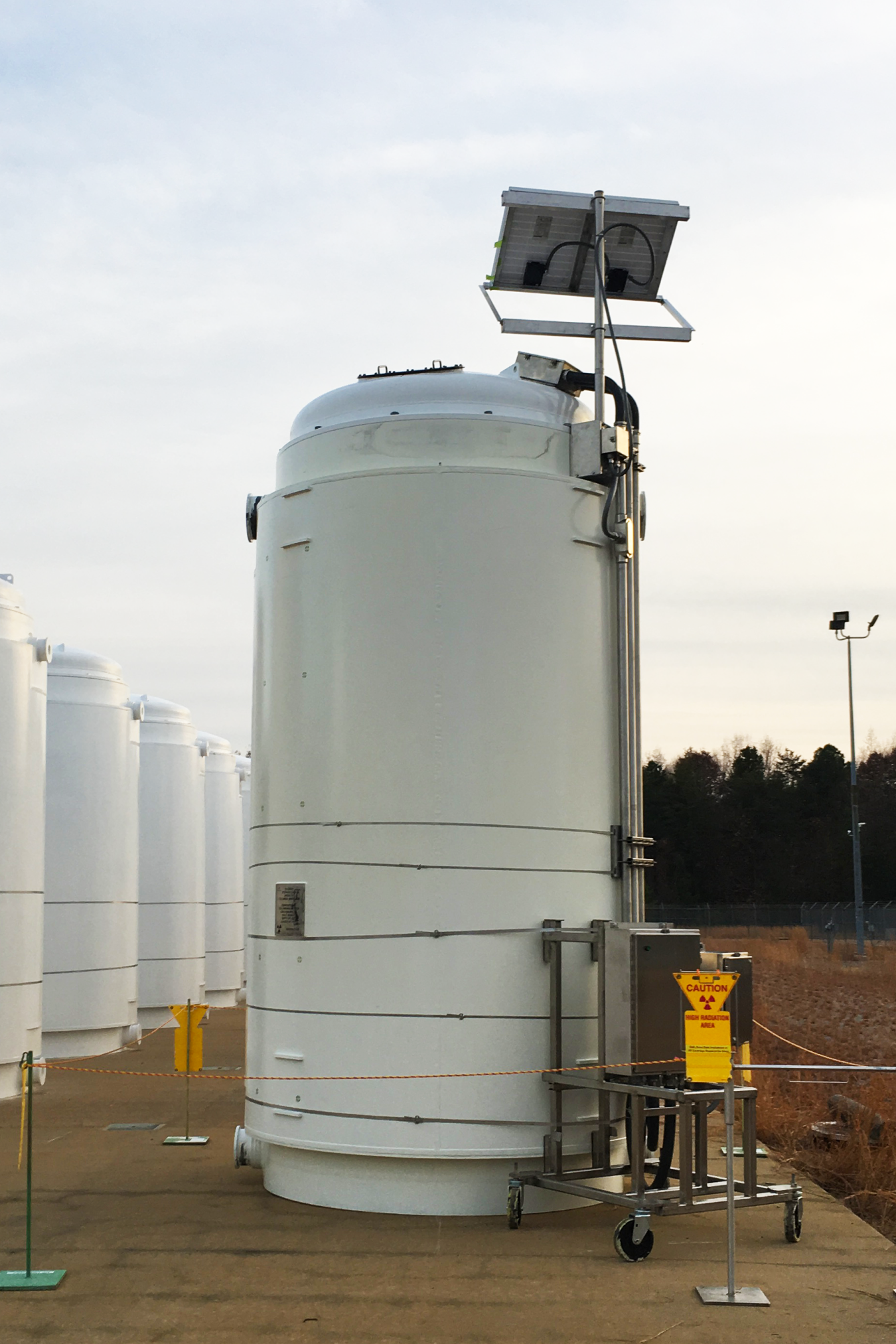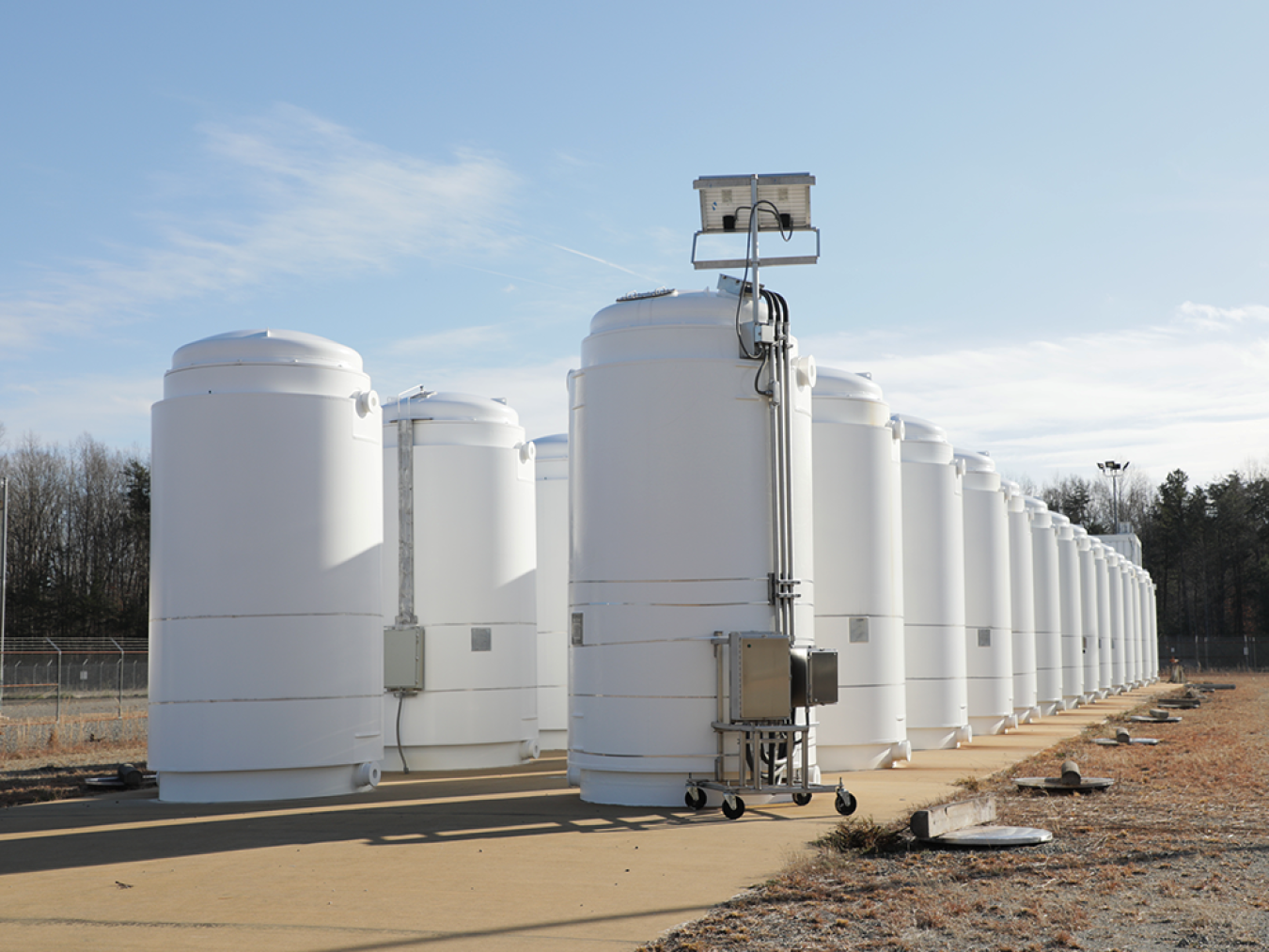The Department of Energy teamed up with the Electric Power Research Institute to lead a research project focused on “high burnup” spent nuclear fuel.
July 7, 2025The United States has been generating electricity from nuclear power since the late 1950s. With that power comes responsibility — specifically, the safe and secure management of spent nuclear fuel.
Today, more than 95,000 metric tons of spent nuclear fuel are stored across 79 sites in over 30 states. By the time current reactors reach the end of their operational life, that number could rise to around 180,000 metric tons.
To support the long-term safety and security of this material, the U.S. Department of Energy (DOE) teamed up with the Electric Power Research Institute to lead a multi-year research project focused on “high burnup” spent nuclear fuel.
High burnup fuel remains in reactors longer to maximize energy output. The U.S. Nuclear Regulatory Commission (NRC) currently licenses the dry storage of high burnup fuel for 20 years and may be extended up to 40 years leveraging data from this research project.

Meet the High Burnup Research Cask
At the heart of this effort is DOE’s High Burnup Research Cask, which was loaded with high burnup spent nuclear fuel generated by the North Anna Power Station in Virginia and placed in dry storage on site in 2017.
The lid of the cask was modified with instrumentation that allow researchers to monitor internal temperatures over time at 63 different locations inside the cask.
Temperature data plays a crucial role. It provides insights into the condition of the fuel and cladding (hollow metal tubes containing uranium fuel pellets), and what effects transportation might have on the fuel structure.
The project planned to monitor temperatures inside the cask for a period of about 10 years.
The data gathered from this project will be shared with the NRC and nuclear plant operators to help inform regulatory decisions about extending dry storage licenses beyond the typical 40-year period.
Next Moves
DOE is currently developing plans and environmental information to support a proposal to relocate the cask to Idaho National Laboratory (INL) within the next few years.
The cask will travel by rail aboard DOE’s specially designed Atlas railcar, built to safely and securely transport spent nuclear fuel.
At the selected facility, scientific experts will perform a detailed examination of the spent nuclear fuel rods using specialized laboratory equipment.
Data collected from the research cask so far shows that temperatures have remained well within safe limits and the physical inspection of the fuel assemblies and the cask will be crucial in better understanding how high burnup fuel behaves over time in a storage system.
Laying the Groundwork
Plans to transport the cask and open it at INL’s research facilities were made possible through a targeted waiver of the 1995 Idaho Settlement Agreement.
Several countries also use the same fuel types as the United States and are facing similar issues. This project will contribute to the establishment of a new international center for applied research, where scientists from around the world will collaborate on the safe storage and transportation of spent nuclear fuel.
As preparations continue, DOE is working closely with federal agencies, Tribal and State governments along potential transportation routes to ensure safety, transparency, and readiness every step of the way.
Delivery of the research cask is anticipated by fall 2027 with research being conducted for the next decade related to the behavior of the system during storage.


